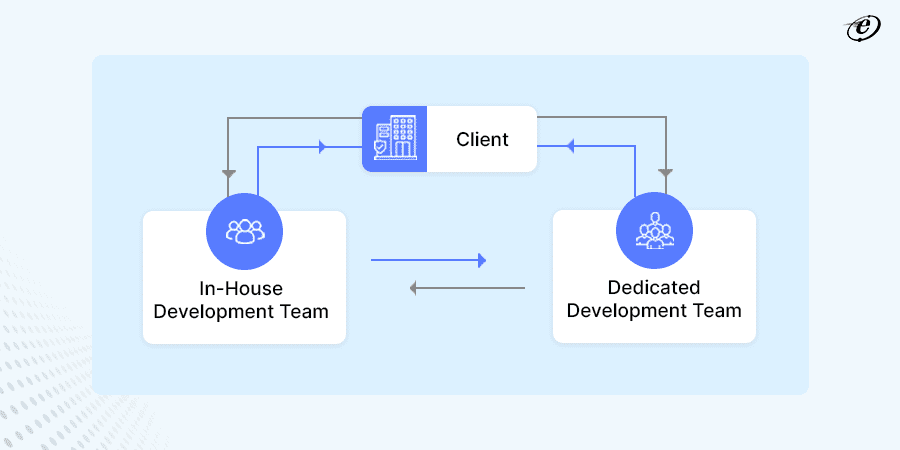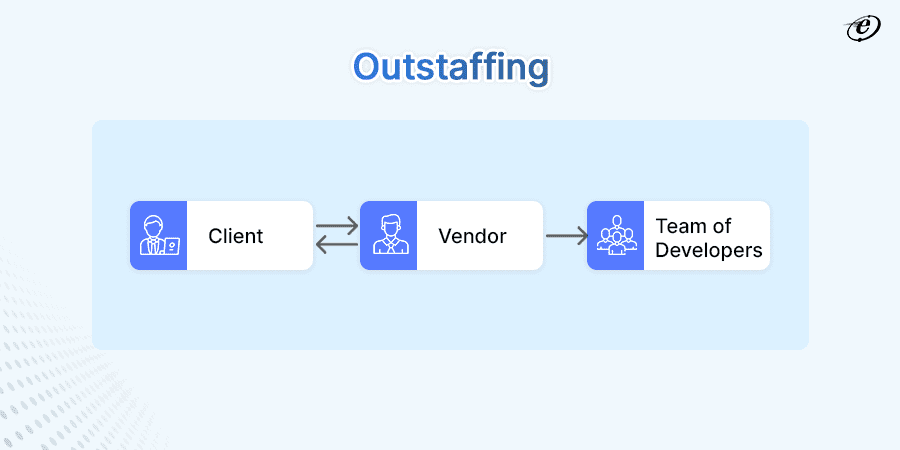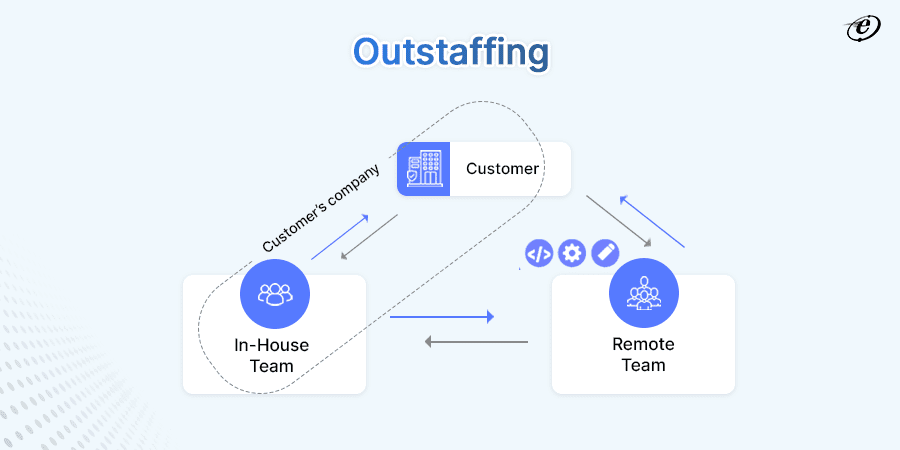Many operations and initiatives that modern firms take on, both locally and globally, are outsourced to third parties. This is especially the case with custom software development, when businesses leverage vendor assistance to increase their projects’ technical capability and internal team productivity.
There are various ways to increase your IT staff’s capabilities. Most of the time, one would hear a debate over outsourcing vs outstaffing, which is superior. Both may be good choices in certain situations. However, how do these situations differ regarding working with software development vendors?
To learn more, read this article till the end, which covers a detailed comparison of outsourcing vs outstaffing.
Big and small enterprises frequently use outsourcing and outstaffing tactics to handle their expanding software development requirements, which spares them the hassles of hiring people in-house.
According to sources, 92% of G2000 businesses assign time-consuming development chores to outsourcing providers so they can concentrate on their main goals.
Task delegation, cost savings, access to a large talent pool, and worldwide experience are all implied by the outsourcing and outstaffing strategies. The two have a few differences, so it is essential to understand which can help you grow your company more quickly and affordably.
The decision between “outsourcing vs. outstaffing” is influenced by various variables, such as the complexity of the project, the demands and size of the organization, and the desired degree of control and engagement in the job.
Therefore, knowing the main distinctions and advantages of each choice enables businesses to decide in a way that best suits their unique aims and objectives. Your company can select the staffing solution that best fits your situation by weighing the benefits and drawbacks.
So, what are you waiting for? Let’s dive deep, understand the concept of outsourcing vs outstaffing, and make an informed decision.
What is Outsourcing?
Outsourcing is a kind of offshore development in which a client or organization employs a software development outsourcing company to handle all aspects of their software project, including ideation, development, and testing.
A development team is allegedly engaged to work remotely on one or more of your development projects as part of the outsourcing strategy. Under this paradigm, project deliverables, administrative duties, and team member management are all handled by an external organization.
An outsourced team works remotely and can handle projects, including developing software, websites, apps, and more. One of the special features of an outsourced IT model is that all project components, from concept to testing, will be handled by the members of your development team.
Let’s understand it with a simple daily life example:
Hiring a cleaning service to maintain your home. Instead of personally cleaning, you delegate the task to professionals specializing in it. This saves time and ensures quality, allowing you to focus on other priorities while the outsourced service handles the cleaning efficiently.
Outsourcing is Best For:
- Standardized Products: Items with well-defined specifications and standardized manufacturing processes.
- Mass-Produced Goods: Products that require high-volume production to achieve cost efficiencies.
- Low-Complexity Goods: Items that don’t require specialized expertise unique to your business.
- Routine Tasks: Repetitive or routine Services, such as customer support or data entry.
- Non-Core Activities: Tasks that are not central to your business’s value proposition or core competencies.
- Cost-Sensitive Items: Products where cost reduction is a primary concern.
- Scalable Products: Goods that require flexible production capacity to meet fluctuating demand.
What is OutStaffing?
Outstaffing is a sort of offshore development that occurs when a client employs a contractor from any software development outsourcing provider to handle their development work.
By adding engineers another firm legally employs to their team, a company can outstaff that other one through staff augmentation. They choose from a talent pool of professionally developers that the outsourcing provider has previously screened. By partnering with such a company, your organization can hire a team or individual to complete a particular activity or project.
Staff augmentation vs managed services: Find the core difference.
This hiring method is best for companies with strong internal development teams that wish to save money on hiring people or who require a professional’s knowledge in a particular field.
Let’s understand it with a simple example:
An example of outstaffing is hiring a personal assistant through an agency. Rather than directly employ them, you use the agency’s services to manage administrative tasks. The assistant works exclusively for you, but the agency handles their payroll, benefits, and other HR responsibilities, providing flexibility and convenience.
OutStaffing is Best For:
- Highly Specialized Products: Items that require expertise or customization unique to your business.
- Complex Solutions: Products with intricate designs or technical specifications that demand specialized skills.
- Customized Services: Offerings that require tailored solutions to meet individual customer needs.
- Strategic Projects: Initiatives that require dedicated resources and close collaboration with your team.
- Innovative Products: Goods that involve research and development, necessitate close control over the development process.
Difference Between Outsourcing vs Outstaffing
Gaining a competitive edge, reducing expenses, and maximizing operational efficiency are the goals of both outstaffing and outsourcing. Their methods and implications, however, vary significantly.
To enhance our understanding of outsourcing and outstaffing models, we have developed a comparative analysis that centers on fundamental strategic elements of software development.
1. Cost
Cost is one of the most important factors to consider when deciding between outsourcing vs outstaffing. When comparing all expenses, outsourcing may be slightly more costly. It is expensive because the software outsourcing partner you choose handles all aspects of the development process, from distribution to control.
One of the most significant benefits of outstaffing is prices. You won’t be required to pay management fees because you will simply need staff workers. Besides this, because the client handles most of the operations, including task delegation and management, IT outstaffing is less expensive.
This isn’t the case with outsourcing because you must cover the operation’s total cost. While outstaffing reduces management expenses significantly, it’s a more cost-effective choice for companies.
2. Flexibility/Adaptability
Out of outstaffing vs outsourcing, outsourcing provides flexibility by allowing companies to adapt quickly to changing business needs by accessing specialized services and scaling resources as required. External vendors offer flexibility in service delivery models, enabling companies to customize solutions and respond promptly to fluctuations in demand.
Frontend development outsourcing: A detailed guide
Outstaffing, while providing cost advantages, offers less flexibility as it involves establishing operations in specific locations, which may limit agility in resource allocation and responsiveness to market dynamics.
While outsourcing provides on-demand access to expertise and services, offshoring requires longer-term commitments and investment in infrastructure, potentially reducing the agility to adapt to rapidly changing business conditions.
3. Team Management
In terms of managing a team, out of outstaffing vs outsourcing, outsourcing provides specialized knowledge and flexibility, whereas outstaffing permits closer oversight, building better bonds, and alignment with organizational objectives.
Team management is another area where outsourcing falls short of outstaffing. By hiring outside companies to do certain jobs or projects, outsourcing reduces the need for direct supervision but may also jeopardize cultural and team cohesiveness.
However, outstaffing involves employing remote workers via a staffing company, giving you more control over project management, integrating your team, and creating a cohesive work atmosphere.
4. Amount of Control
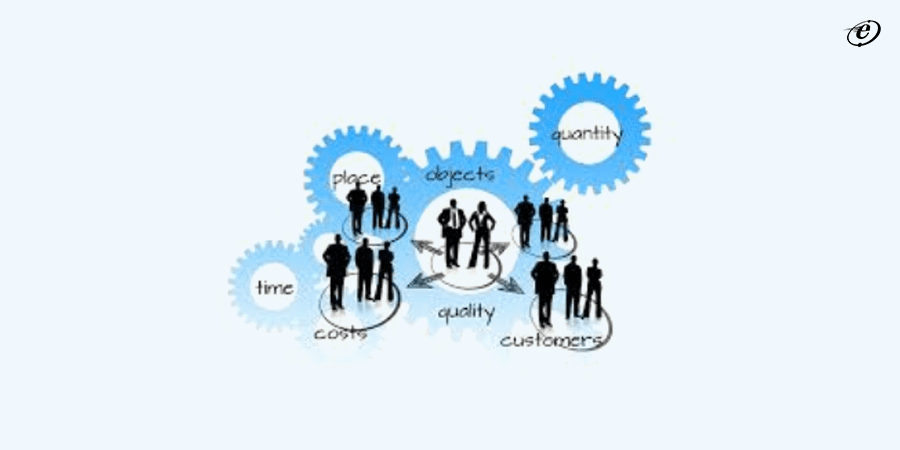
Out of outsourcing vs outstaffing, outsourcing relinquishes direct control over project execution to external vendors, who manage tasks independently, focusing on delivering predefined results. This model provides less day-to-day oversight but demands clear communication and robust contractual agreements.
In contrast, outstaffing allows for more control as remote employees work directly under the client’s supervision, seamlessly integrating into existing teams. Clients retain authority over task prioritization, workflow, and performance evaluation, facilitating greater alignment with organizational goals.
While outsourcing offers flexibility and specialized expertise, outstaffing provides tighter control over operations, enabling swift adjustments and fostering closer collaboration. The choice depends on the desired level of involvement and project complexity.
5. Scalability
Scalability is one of the essential considerations when choosing between outsourcing vs outstaffing. Outsourcing offers scalability by allowing organizations to quickly access additional resources or expertise from external vendors to meet fluctuating demand.
Firms can quickly scale up or down by adjusting the scope of outsourced projects or engaging additional vendors as needed. However, scalability may be constrained by vendor availability or contractual limitations.
Outstaffing enables more flexible scalability by directly hiring remote employees, allowing organizations to easily adjust team sizes and compositions based on project requirements. This model provides greater control over resource allocation and facilitates rapid scaling without relying on external partners.
6. Communication
Comparing outstaffing vs outsourcing, the latter relies on effective communication channels with the vendor. In contrast, outstaffing encourages direct interactions, enhancing transparency and alignment between the client’s objectives and the remote team’s efforts, ultimately facilitating smoother project execution.
Outsourcing typically involves communication primarily with a project manager or liaison from the external vendor, requiring clear briefings and regular updates but potentially resulting in communication gaps or delays due to the intermediary.
In contrast, outstaffing fosters direct communication with remote team members, promoting seamless collaboration and immediate feedback loops. Clients can engage with outstaffed employees directly, facilitating quicker decision-making and a deeper understanding of project nuances.
IT staff augmentation benefits for startups and small businesses.
7. Payment

When choosing between outsourcing vs outstaffing, remember that in software development outsourcing, the client company oversees payment management. Conversely, in the case of IT outstaffing, workers receive monthly compensation.
Outsourcing typically involves paying a fixed fee or a per-project rate negotiated with the external vendor, offering cost predictability but potentially limiting flexibility for adjustments.
Find the cost to hire dedicated React developer in India.
Conversely, outstaffing often entails hourly or monthly payments for remote employees’ services, providing more flexibility to scale resources up or down as needed. While outsourcing may require upfront investment or milestone payments, outstaffing allows for more granular control over expenditure, aligning payments with actual work hours.
8. Technical Expertise

Technical proficiency is a crucial factor to consider when comparing outstaffing vs. outsourcing. Having a technological background is necessary for outstaffing because you will be managing a remote crew. Managing outstaffed employees may prove challenging if you lack the essential skill set.
However, you cannot leave everything regarding outsourcing up to the partner company. When outsourcing software development, you must precisely determine your project’s needs and set up the necessary development tasks. Additionally, since the software developers you hired are skilled in all facets of software development, they assume full responsibility for all functions.
9. Responsibility

You might discover that outsourcing assigns you less responsibility than outstaffing regarding software initiatives. Since you are in charge of the project when you outstaff, you are responsible for its success or failure. Since your partner makes the decisions when you outsource, you may hold them accountable if something goes wrong.
Overall, if we compare outsourcing vs outstaffing, we can state that while the outsourced team handles the entire project, the customer has fewer duties when they outsource. Yet, they should still be involved to achieve good results.
In contrast, the client has greater responsibility when using the outstaffing approach because they are the ones in direct management of the IT specialists.
IT Staff Augmentation Future Trends & Predictions
Outsourcing vs Outstaffing: Pros & Cons
Let’s check which model fits best in your project needs.
Advantages of Outsourcing: Why choose this model?

Outsourcing offers several advantages for businesses, including:
-
Cost Saving
Cost savings are among the main advantages of outsourcing development. In outsourcing, money is not required to be spent on hiring, equipment, office supplies, or other onboarding tasks. Businesses can cut operational costs associated with salaries, benefits, and overhead by outsourcing non-core operations to nations with cheaper labor prices.
-
Access to Wide Talent
Companies can access a variety of talents, specializations, and skills through outsourcing. Businesses can use external vendors’ expertise and experience in particular fields to enhance quality and productivity.
-
Reliability & Speed
Most businesses aim for quick development to launch their goods as soon as feasible. Outsourced teams can offer high-quality software significantly faster than in-house teams because of how quickly the onboarding process is completed.
-
Risk Mitigation
Outsourcing can help mitigate several risks associated with in-house operations, such as technological obsolescence, market fluctuations, and regulatory compliance. External vendors often have specialized knowledge and tools to manage risks more effectively, reducing the burden on the client organization.
-
Flexibility & Scalability
Outsourcing companies allow businesses to scale resources up or down based on fluctuating demand or project requirements. Companies can easily adjust the scope of outsourced services, engage additional vendors, or terminate contracts as needed, allowing for greater agility and cost-effectiveness.
Disadvantages of Outsourcing: When is this model not ideal?

While outsourcing offers numerous advantages, it also comes with several disadvantages and challenges:
-
Security Risk
You should be aware that there is a possibility of security hazards when you choose an outsourcing company. Confidentiality breaches, data breaches, and intellectual property theft are among the security concerns associated with sharing sensitive or private information with outside parties.
-
Limited Visibility
Less project transparency is provided by outsourcing. However, this can have both negative and positive effects on business goals. Outsourcing your IT department might not be the best option if you prioritize control and involvement.
-
Loss of Control
Entrusting critical business functions to external vendors may result in a loss of direct control over quality, timelines, and decision-making processes. Dependence on third-party providers can lead to communication gaps, cultural differences, and conflicts of interest, affecting outsourced projects’ overall effectiveness and success.
-
Communication Challenges
Time zone variances, cultural differences, and language obstacles all contribute to communication problems. Inefficiencies and project delays can result from miscommunication, misinterpretations, or delays in progress that hamper coordination and alignment between the customer and the outsourcing partner.
Advantages of Outstaffing: Why choose this model?

Outstaffing offers several advantages for business including:
-
Improve Efficiency & Productivity
If you assign certain tasks or projects to remote workers, your team will have more time to concentrate on essential company operations. Better output, higher quality, and exceptional efficiency could arise from this. Furthermore, by outstaffing, you can reach a broader range of potential employees, including specialists in areas that might not be widespread in your region.
Explore top skills to look for in an IT staff augmentation partner.
-
Cost Transparency
Outstaffing provides transparency into resource utilization and cost allocation. Clients pay for remote employees’ time and effort directly, allowing for accurate budgeting, cost control, and performance monitoring, minimizing unexpected expenses and maximizing ROI.
-
More Control & Access
Unlike outsourcing (where the hired outstaff or remote development team often holds the keys to the process), outstaffing gives businesses complete control over the daily operations and projects, enabling them to manage the project process more accurately.
-
Customization & Adaptability
Outstaffing solutions can be tailored to meet specific project requirements, timelines, and cultural preferences. Customizable engagement models, work arrangements, and communication protocols enable clients to adapt flexibly to evolving business needs and market dynamics.
-
Hiring Flexibility
One of the most flexible recruiting strategies is outstaffing, which assigns specific projects and tasks, establishes direction and involvement levels, and simplifies schedule adjustments. Additionally, the vendor will handle payroll, HR, and other challenges associated with maintaining an internal staff.
Read the detailed guide on IT staff augmentation for businesses.
Disadvantages of Outsourcing: When is this model not ideal?
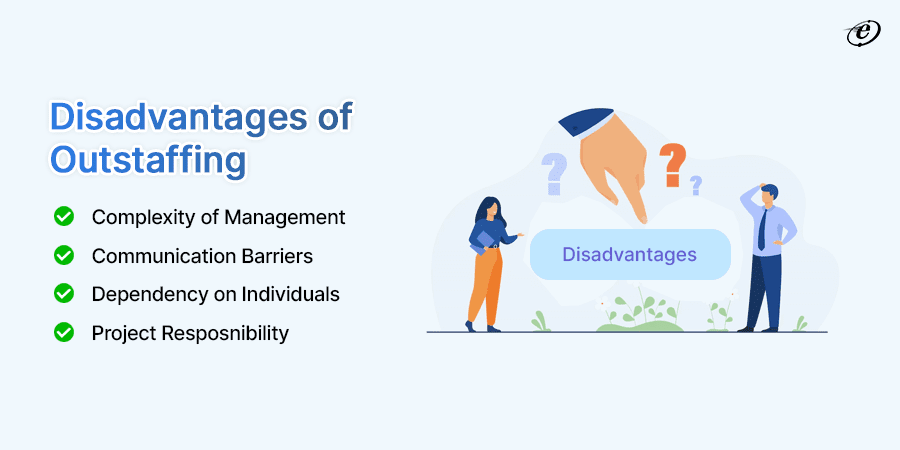
While outstaffing offers several advantages, it also comes with some potential disadvantages and challenges:
-
Complexity of Management
Managing a distributed team of remote employees can be challenging. It requires effective communication, coordination, and leadership skills to overcome geographical barriers, time zone differences, and cultural diversity. Failure to establish clear expectations, processes, and feedback mechanisms can impede team performance and cohesion.
-
Communication Barriers
Dedicated development teams need to communicate with each other because vendor staff usually works remotely or at least independently from the rest of the team. In distributed teams, miscommunication, misunderstandings, or language issues can make collaborating, making decisions, and solving problems difficult.
-
Dependency on Individuals
Outstaffing arrangements may create dependency on individual remote employees for specific skills, knowledge, or tasks. If a key team member leaves or becomes unavailable, workflow, project continuity, and overall productivity can be disrupted.
-
Project Resposnibility
Managing a dedicated team of remote employees can be challenging. It requires effective communication, coordination, and leadership skills to overcome geographical barriers, time zone differences, and cultural diversity. Failure to establish clear expectations, processes, and feedback mechanisms can impede team performance and cohesion.
Outstaffing vs Outsourcing: What to Choose for your Business?

When deciding about your next project, you must carefully weigh a number of aspects to determine if outsourcing vs outstaffing will best serve your needs. Here’s a concise guide to help you make the decision:
-
Project Requirements
Start by first assessing the specific needs of your project. Outsourcing might be suitable if it involves well-defined and independent tasks. However, if you need more control over the development process and want to integrate external resources seamlessly into your team, outstaffing would be preferable.
-
Budget Considerations
Evaluate your budget constraints. Outsourcing often involves fixed project costs, which can benefit budgeting. On the other hand, outstaffing allows for more flexibility in resource allocation and cost control, as you pay for the actual hours worked by the staff.
Find the React Native App development cost in India.
-
Expertise and Skillsets
Determine the level of expertise and skillsets required for your project. Outsourcing can provide access to specialized talent pools, whereas outstaffing allows you to directly manage and oversee the skills of the staff assigned to your project.
Explore the top skills to look for in a staff augmentation partner.
-
Communication and Collaboration
Consider the importance of communication and collaboration in your project. If regular communication and close collaboration with the development team is crucial, outstaffing might be preferable, as it allows for direct interaction and integration with your in-house team.
-
Risk Management
Assess the level of risk tolerance for your project. Outsourcing involves transferring a significant portion of the project’s responsibility to the vendor, whereas outstaffing requires more involvement in management and oversight. Choose the option that best aligns with your risk management strategy.
By carefully considering these factors, you can determine the best staffing solution for your upcoming project, ensuring its success and efficiency within your organization’s context.
Software Outsourcing & Outstaffing with the eLuminous team
eLuminous Technologies is a one-stop solution for all your outsourcing and outstaffing needs. It consists of a team of experienced, highly proficient, and dedicated developers who are selected after a thorough vetting process.
At eLuminous, we offer outsourcing solutions to businesses worldwide. We provide various services including web application development, mobile app development, maintenance and support, infrastructure management, and business process outsourcing. eLuminous is known for its focus on innovation, quality, and client satisfaction, making it a preferred outsourcing partner for many businesses.
Our goal is to assist our partners in identifying the best solution for their project needs and budgetary constraints. Our unmatched experience and dedication to quality have established us as a reliable offshore development partner for companies looking to maximize their performance and simplify their IT operations.
Have a look at our success stories!
End Note
Your organization’s performance can be greatly impacted by making a strategic decision when selecting an outsourcing vs outstaffing provider. It would be beneficial if you identified your objectives, assessed the expertise level, evaluated technological capabilities, prioritized data security, and closely reviewed contracts and pricing to make an informed option that fits your needs and goals.
Effective governance, communication, and risk management techniques are ultimately necessary for successfully implementing outsourcing and outstaffing methods to minimize potential obstacles and optimize the advantages for all parties involved.
By following this blog, you will understand the distinctions between outsourcing and offshoring, and align them with organizational goals, you can make informed decisions to optimize your global operations and enhance your competitive position in the dynamic marketplace.
Frequently Asked Questions
-
Is it possible to use both outsourcing and outstaffing together?
Yes, it is possible to use both outsourcing and outstaffing together. Enterprises may outsource certain functions to outsourcing companies while simultaneously leveraging outstaffing to augment their in-house teams with additional specialized talent on a temporary basis, optimizing operational efficiency and flexibility as needed.
Who is responsible for resource management in outsourcing vs outstaffing?
In outsourcing, resource management is primarily the responsibility of the external vendor. In outstaffing, the client company retains control and responsibility for managing the resources provided by the staffing agency, integrating them into their existing teams and workflows.
-
Outsourcing vs outstaffing: which is a cost-effective solution?
Outstaffing is often more cost-effective for short-term or project-based needs, as clients pay for specific resources temporarily. Outsourcing may be more cost-effective for long-term or recurring tasks, as vendors often offer bundled services and economies of scale, reducing overall expenses for ongoing operations.
Project Delivery Head
Nitin has over 20 years of IT experience and 3+ years of experience in on-site work in Arizona, USA. In all these years, he has held the positions of delivery manager, module lead, and senior consultant. Expert in advocating product life cycle phases while using self-motivational skills and problem-solving abilities. He works on the principle of “Always Deliver More than Expected.”



